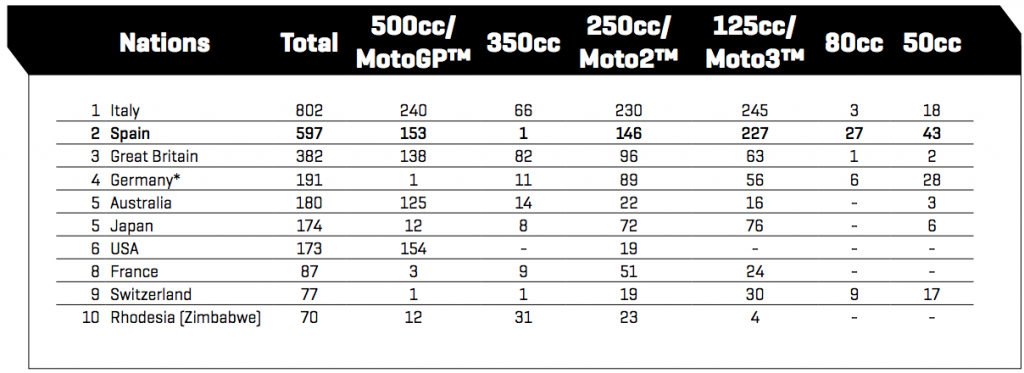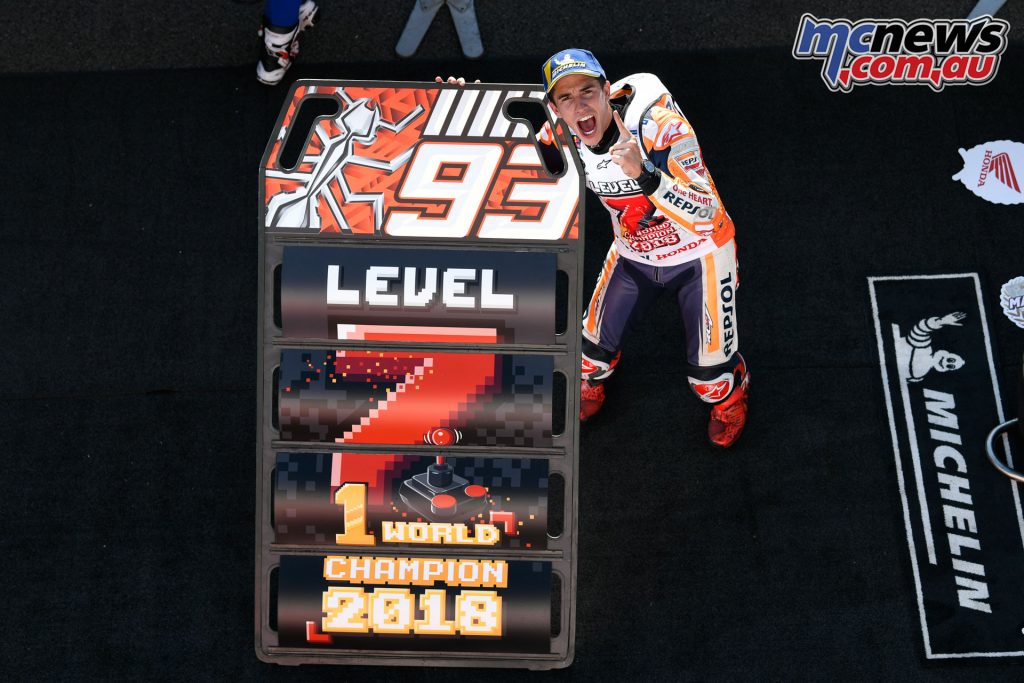MotoGP Stats
Grand Prix motorcycle racing in Australia
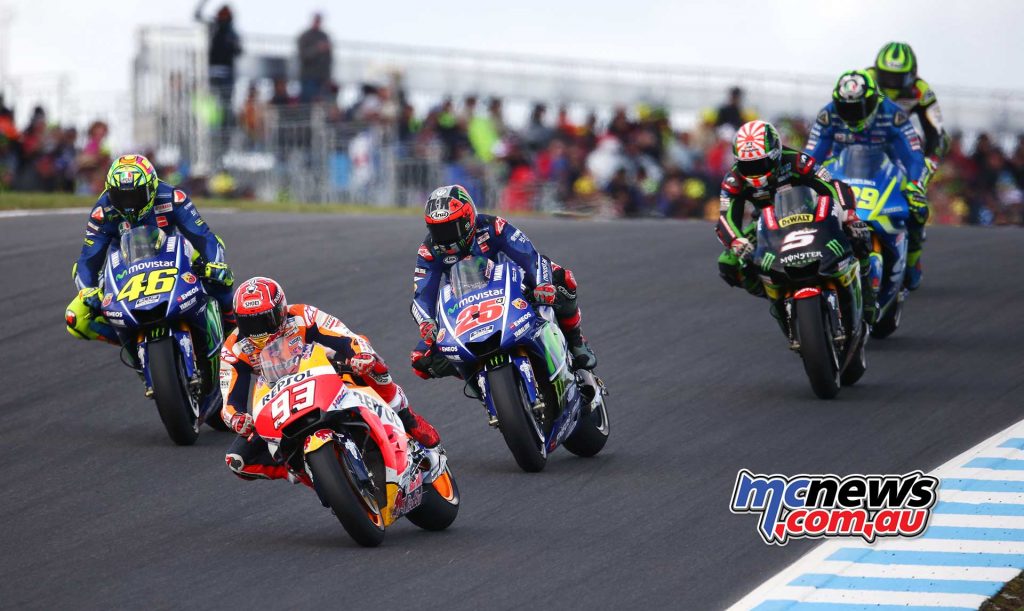
This will be the 30th Australian Grand Prix, which has been held every year since the first visit in 1989.
The first two Australian Grand Prix were held at Phillip Island, before visiting the Eastern Creek circuit for six successive years, then returning to Phillip Island in 1997 where it has since remained. This is the 24th time that the Grand Prix has taken place at Phillip Island.
A total of 69 Grand Prix races for solo motorcycles have been held at Phillip Island since 1989 as follows: MotoGP – 16, 500cc – 7, Moto2 – 8, 250cc – 15, Moto3 – 6 and 125cc – 17.
Since the introduction of the MotoGP class in 2002, Honda have had eight Grand Prix wins in the class at Phillip Island including three victories: in 2015 and 2017 with Marc Márquez and in 2016 with Cal Crutchlow.
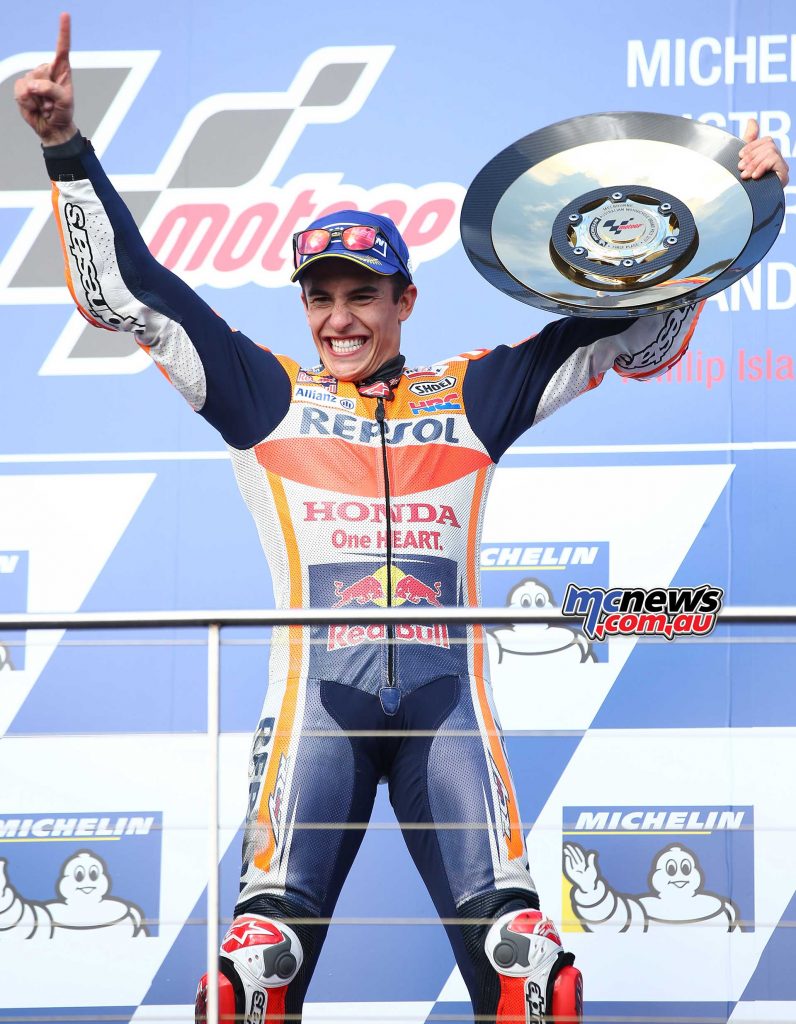
Ducati have had four MotoGP wins at Phillip Island, all of them with Casey Stoner from 2007 to 2010.
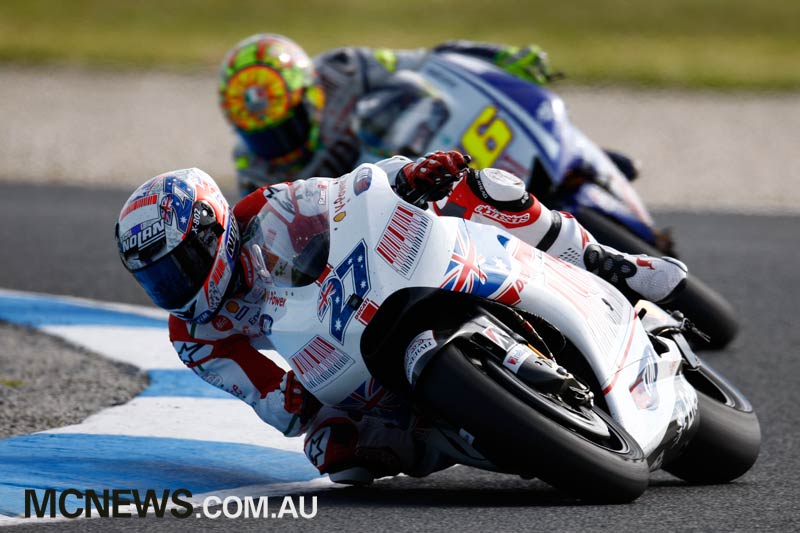
Iannone’s third-place finish in Australia back in 2015 is the only podium for Ducati at Phillip Island since Stoner’s win in 2010.
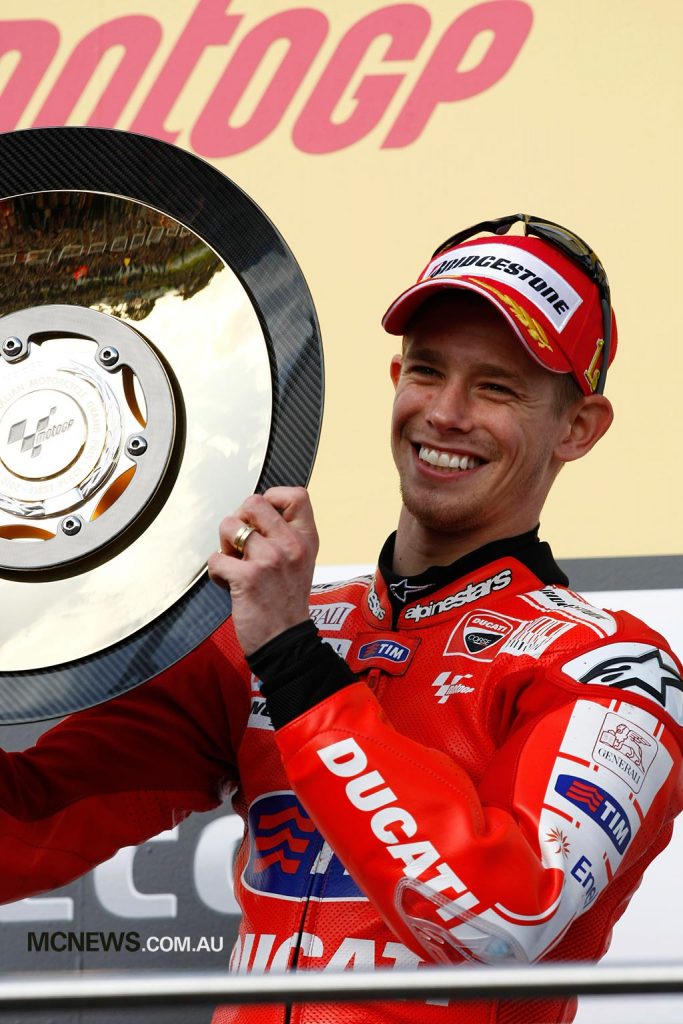
Yamaha have won the MotoGP race at Phillip Island on four occasions, three with Valentino Rossi and one with Jorge Lorenzo, the last of which was in 2014 with Rossi. Both Yamaha Factory riders finished on the podium last year in Australia, with Valentino Rossi in second followed by Maverick Viñales. Johann Zarco crossed the line in fourth making it to three Yamaha riders within the top five.
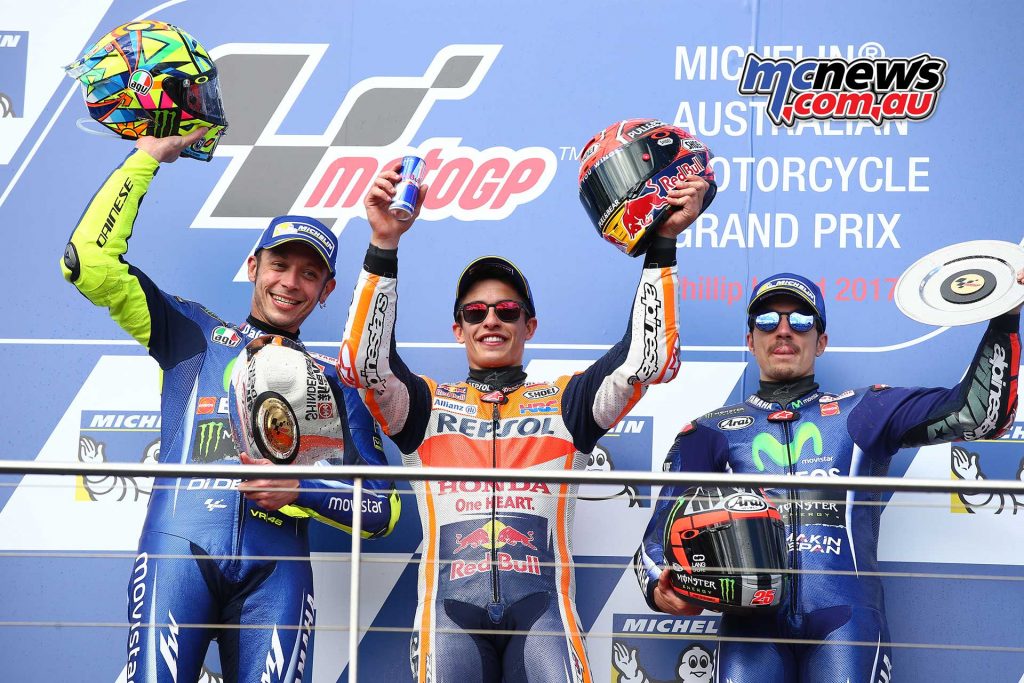
All three podium finishers of the MotoGP race at Phillip Island in 2014 were Yamaha riders, the last all-Yamaha podium in the class so far.
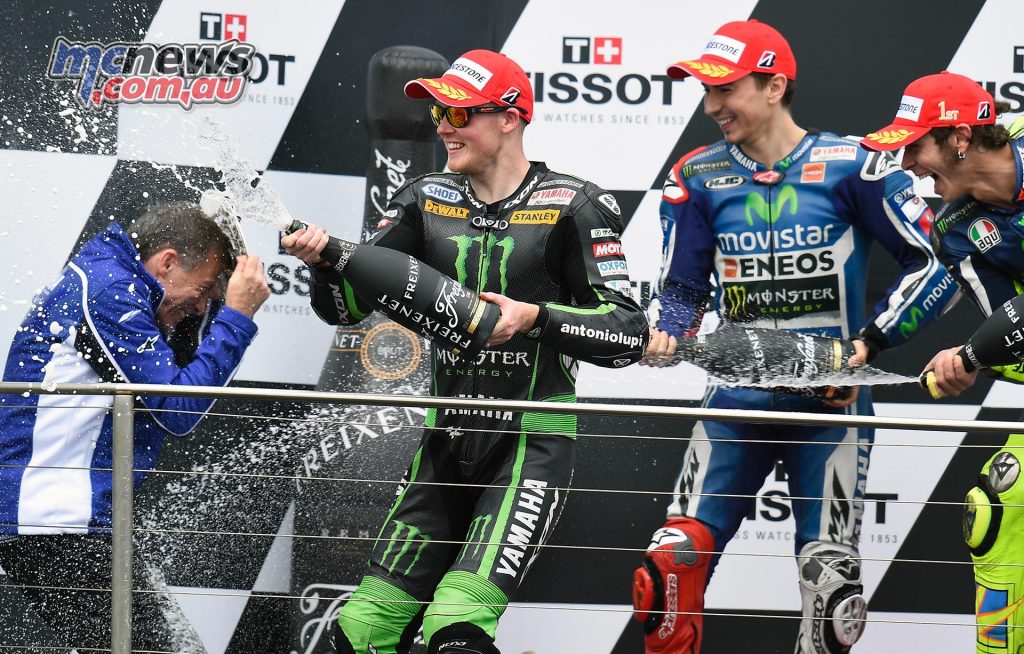
Suzuki have had two podium finishes at Phillip Island in the premier class, in 2006 when Chris Vermeulen finished second and in 2016 when Maverick Viñales finished in third.
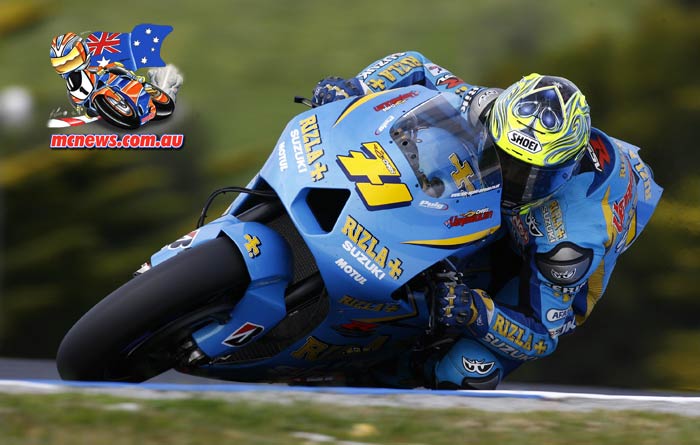
Valentino Rossi is the rider with most GP wins at Phillip Island with eight (5 x MotoGP, 1 x 500cc, 2 x 250cc) followed by Casey Stoner with six, all in the MotoGP from 2007 to 2012. Three other riders have had three GP victories at Phillip Island: Marco Melandri (1 x MotoGP, 1 x 250cc, 1 x 125cc), Jorge Lorenzo (1 x MotoGP, 2 x 250cc) and Marc Márquez (2 x MotoGP, 1x 125cc).
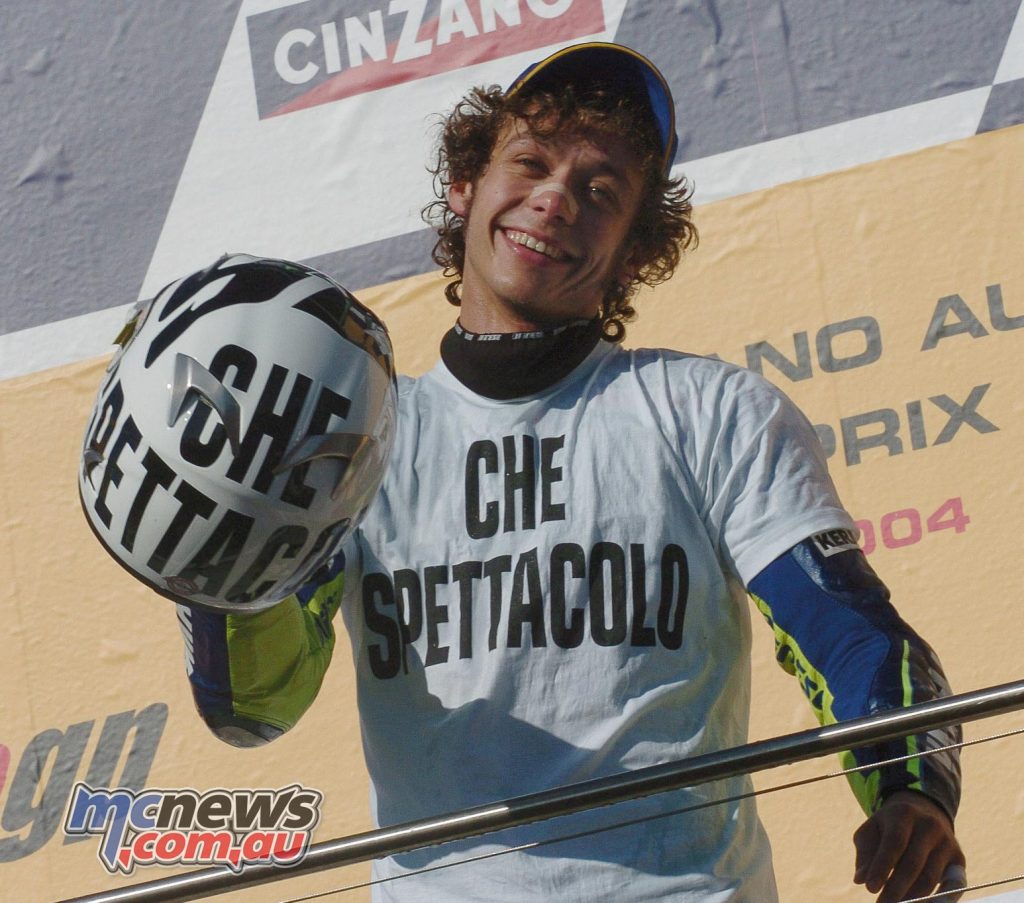
Home riders have taken ten GP wins at Phillip Island: Casey Stoner (MotoGP from 2007 to 2012), Wayne Gardner (500cc in 1989 and 1990), Mick Doohan (500cc/1998) and Jack Miller (Moto3/2014).
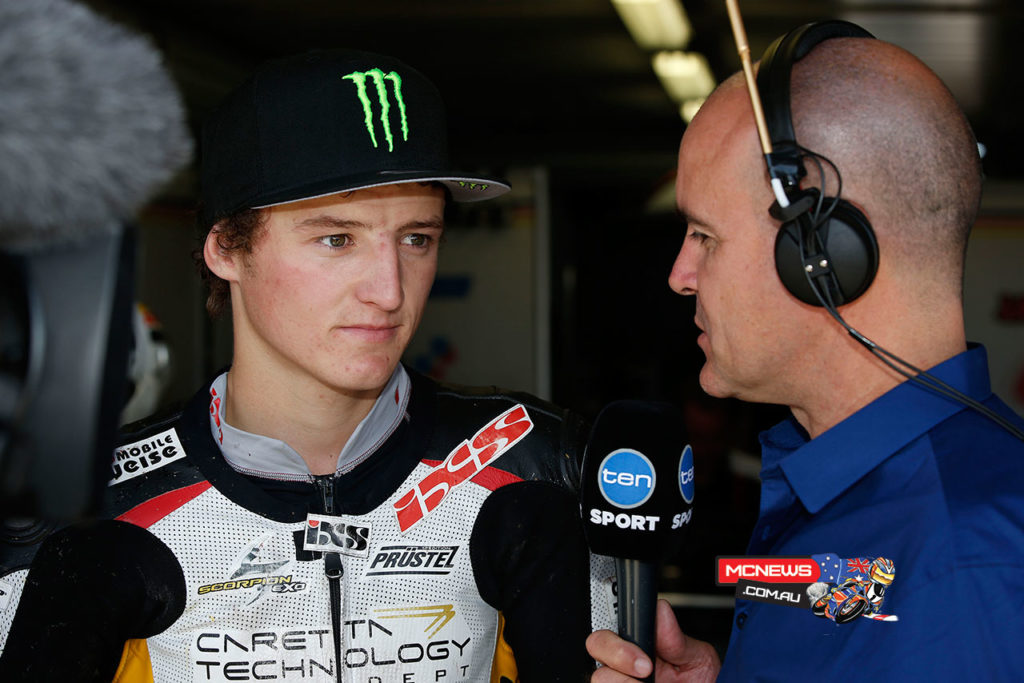
The last Australian rider to finish on the podium at Phillip Island in any of the three classes is Jack Miller, who won the Moto3 race in 2014.
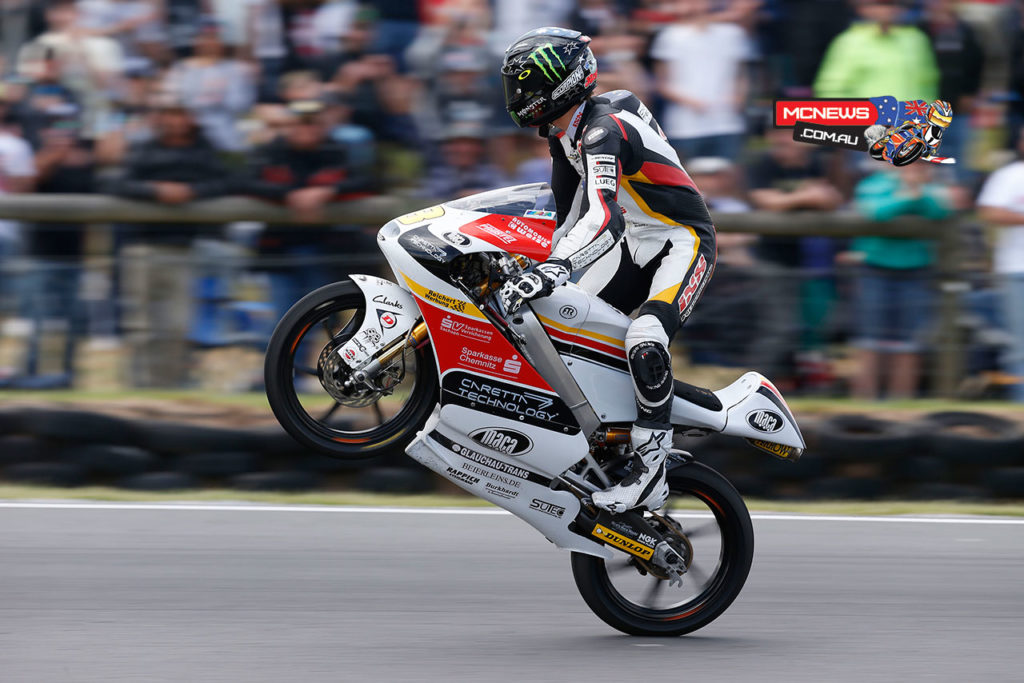
Four riders have both started from pole position and won the race in the MotoGP class at Phillip Island; Valentino Rossi in 2003, Casey Stoner (2008 to 2012), Jorge Lorenzo in 2013 and Marc Márquez (2015 and 2017).
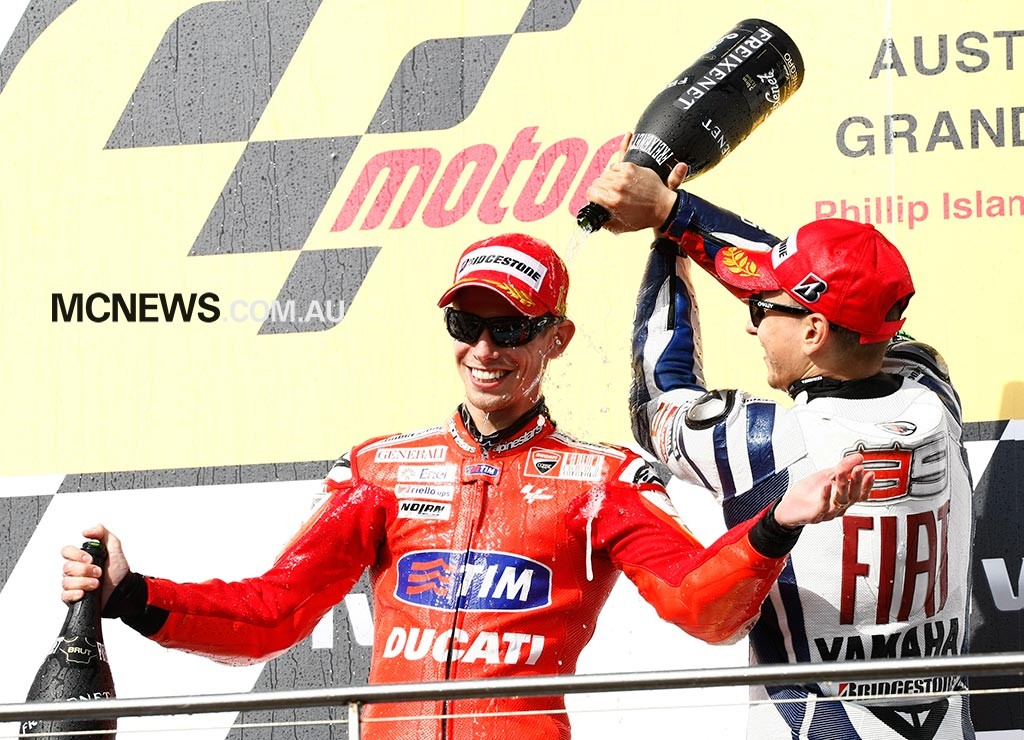
Marc Márquez has started from pole position for the last four years in the MotoGP class at Phillip Island.
The eight Moto2 races that have taken place at Phillip Island have been won by six different riders: Alex De Angelis (2010 and 2011), Pol Espargaró (2012 and 2013), Maverick Viñales (2014), Álex Rins (2015), Tom Lüthi (2016) and Miguel Oliveira (2017). Only two of them have not won from pole position: Maverick Viñales (2014) and Miguel Oliveira (2017).
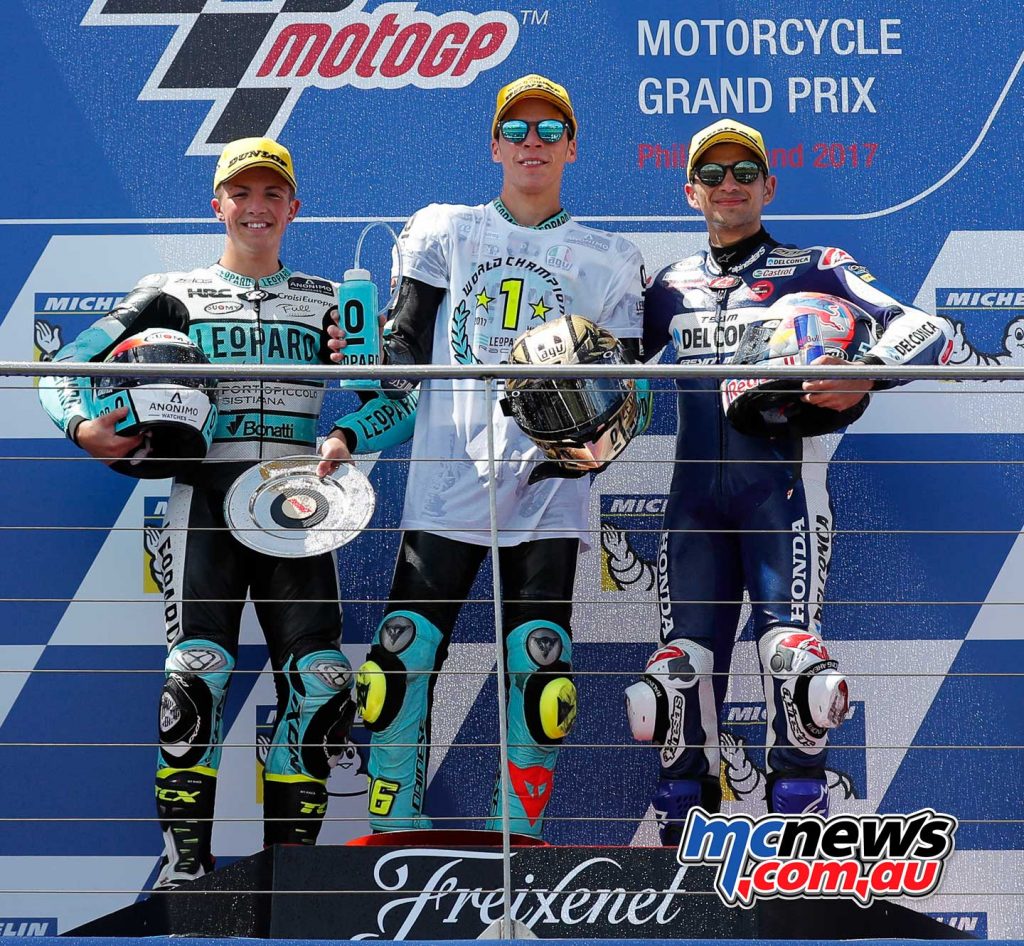
Joan Mir (SPA – Honda) 24’51.490
Livio Loi (BEL – Honda) + 0.351
Jorge Martín (SPA – Honda) + 0.359
The six Moto3 races that have taken place at Phillip Island have been won by 5 different riders: Sandro Cortese (2012), Álex Rins (2013), Jack Miller (2014), Miguel Oliveira (2015), Brad Binder (2016) and Joan Mir (2017). Only Sandro Cortese (2012) and Brad Binder (2016) has won from pole position at the track, both on KTM.
MotoGP Stats and Facts
At the Japanese GP, Marc Márquez won for the eighth time this season so far. Only once has Márquez won more races in one season since he stepped up to the MotoGP class in 2013, that was in 2014 when he won 13 times.
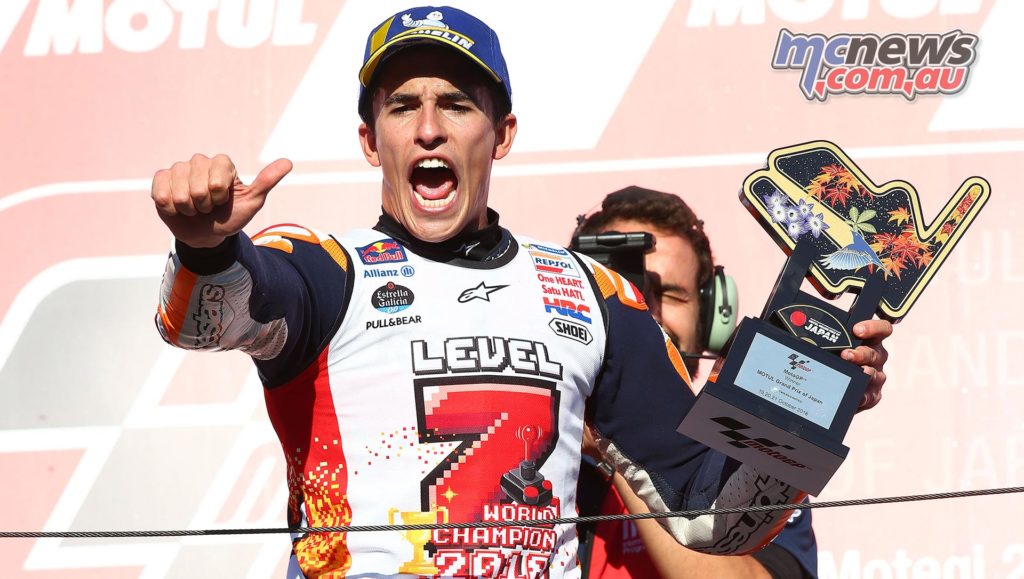
Marc Márquez has won for the 43rd time in the premier class. This is Márquez’ first win after qualifying outside the top five on the grid.
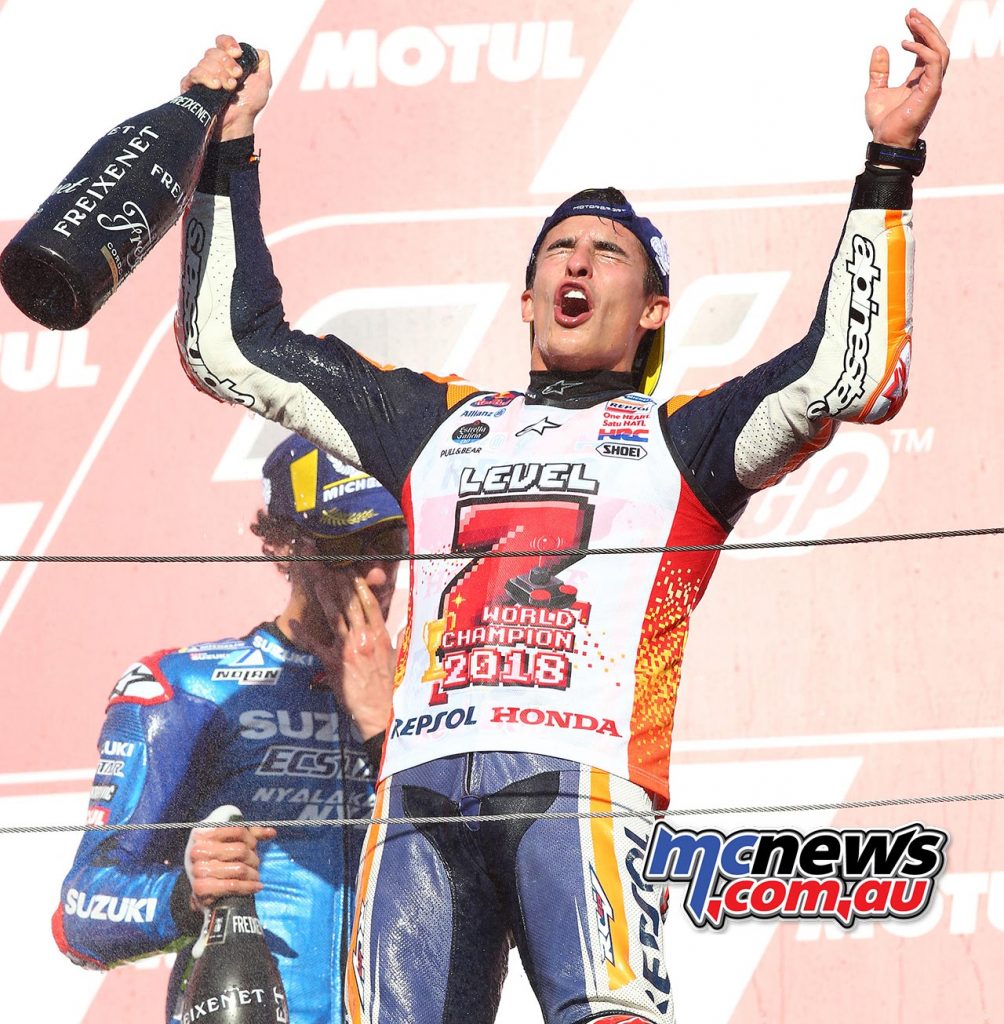
Marc Márquez stood on the podium for the 13th time of the season after the opening fifteen races and has scored 296 points. Only once did Márquez have a better record at this stage of the season, it was in his rookie season in 2013 when he had 14 podium finishes and scored 298 points.
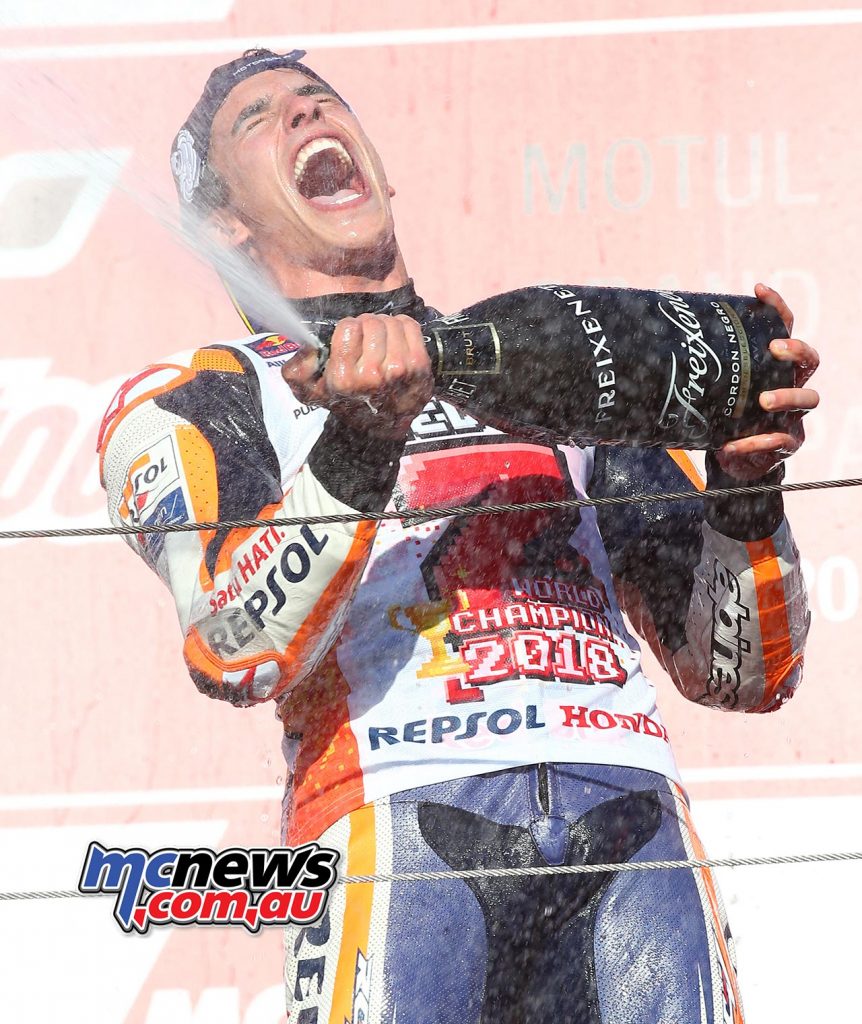
It was Marc Márquez’ 76th podium finish in the premier class of Grand Prix racing, two less than four-time World Champion Eddie Lawson.
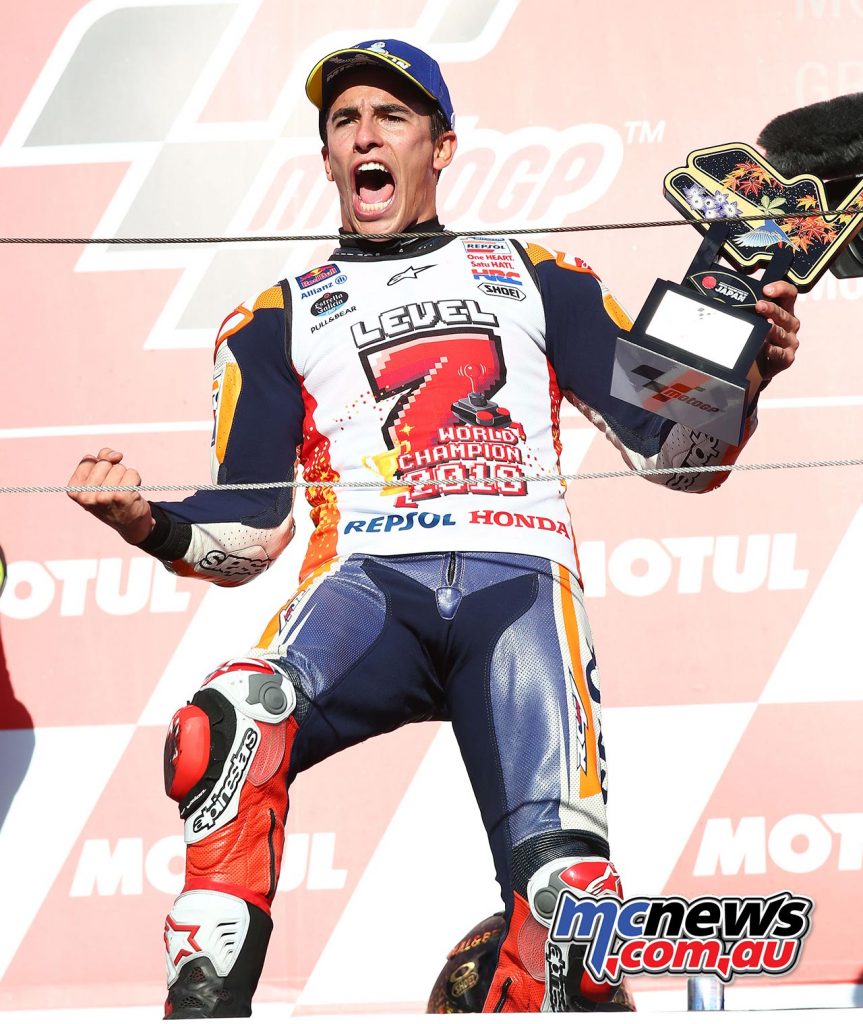
In Japan, Marc Márquez stood on the podium for the ninth successive time, which is his longest podium finish sequence since the last two races of 2013 and the opening ten races of 2014.
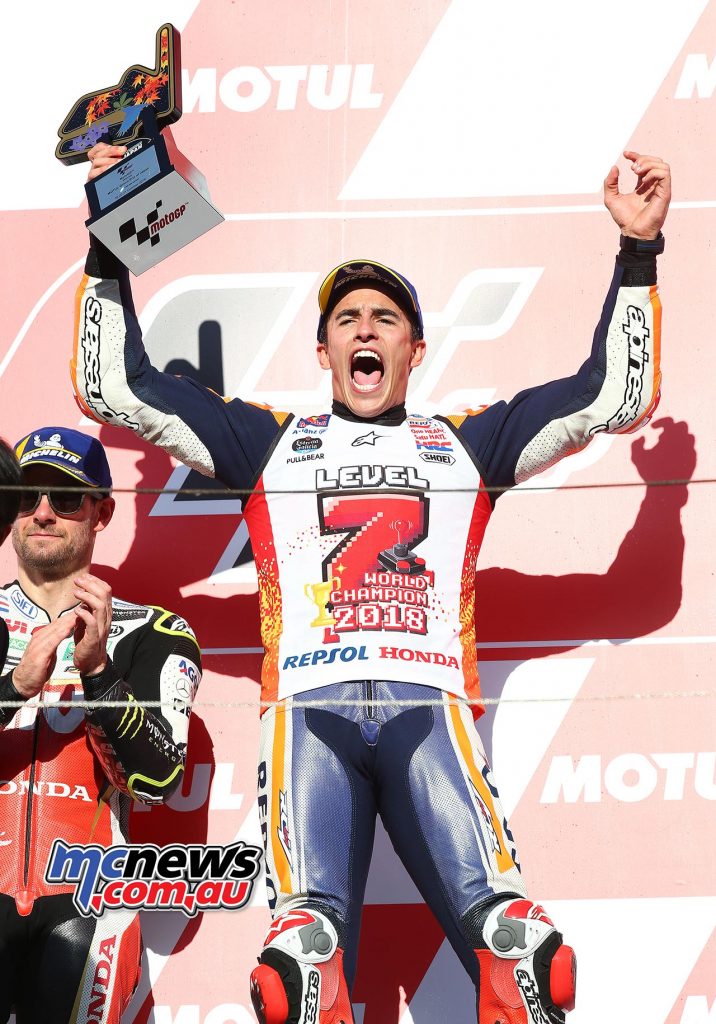
Marc Márquez crossed the line for the 21st successive time in Japan, which is his longest sequence without retiring from the race. The last time he failed to finish a race was at Silverstone last year after a mechanical issue.
With his win in Japan, Marc Márquez (1825 points) closes in on Loris Capirossi (1840) who stands in seventh place of the riders with most points in the premier class of Grand Prix racing.
Andrea Dovizioso, who crashed out two laps before the end in Japan, is scheduled to make his 194th Grand Prix start in the MotoGP class at Phillip Island, equalling Carlos Checa who stands in seventh place on the list of riders with most Grand Prix starts in the premier class, two less than Colin Edwards.
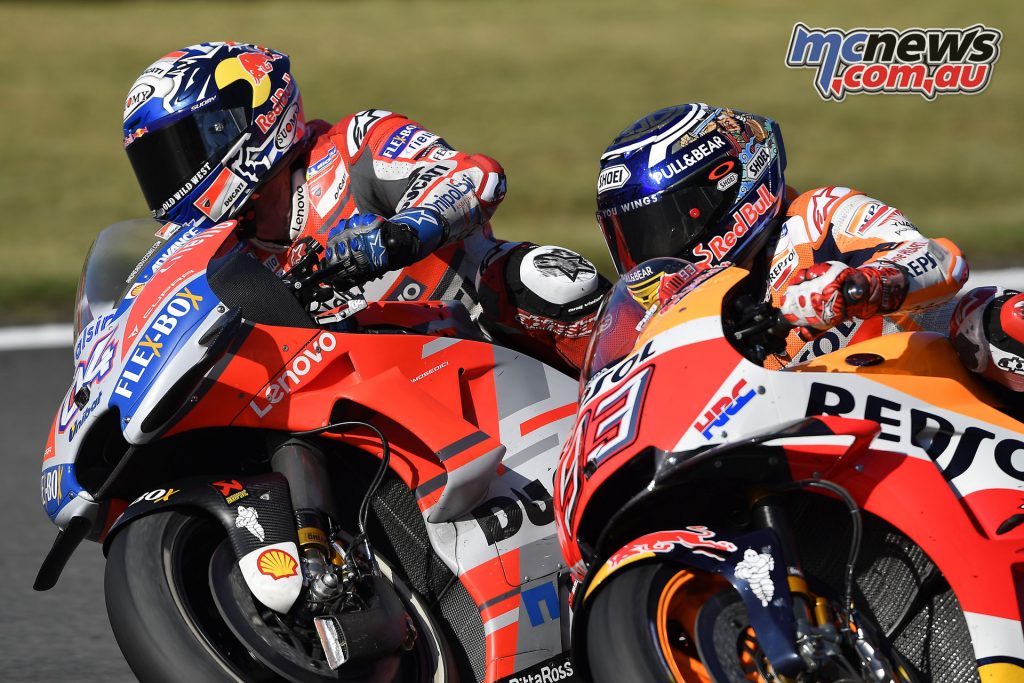
Top rider from an Independent Team, Cal Crutchlow crossed the line in second, which is his third podium finish of the year so far and his best result since his win in Argentina. This was Crutchlow’s 16th podium finish in the MotoGP class, one less than John Hartle who stands in sixth place on the list of British riders with most podium finishes in the premier class.
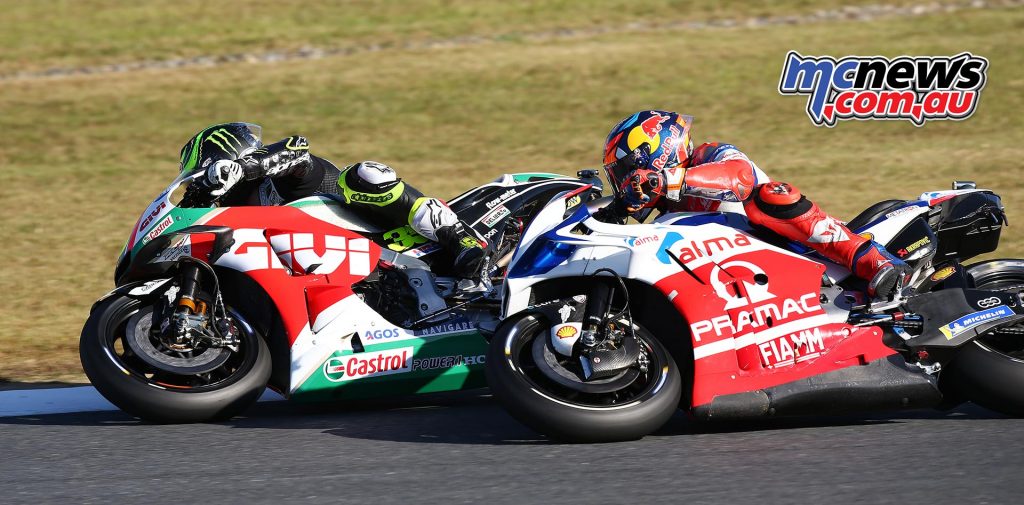
With his second-place finish in Japan, Cal Crutchlow (1009 points) became the first British rider to reach the milestone of 1000 points in the premier class of Grand Prix racing.
Third across the line, Álex Rins stood on the podium for the third time in the MotoGP class. This is Suzuki’s first podium finish at Motegi since Maverick Viñales was also third two years ago and the second podium finish at this track in the MotoGP era since 2002 for the Japanese manufacturer.
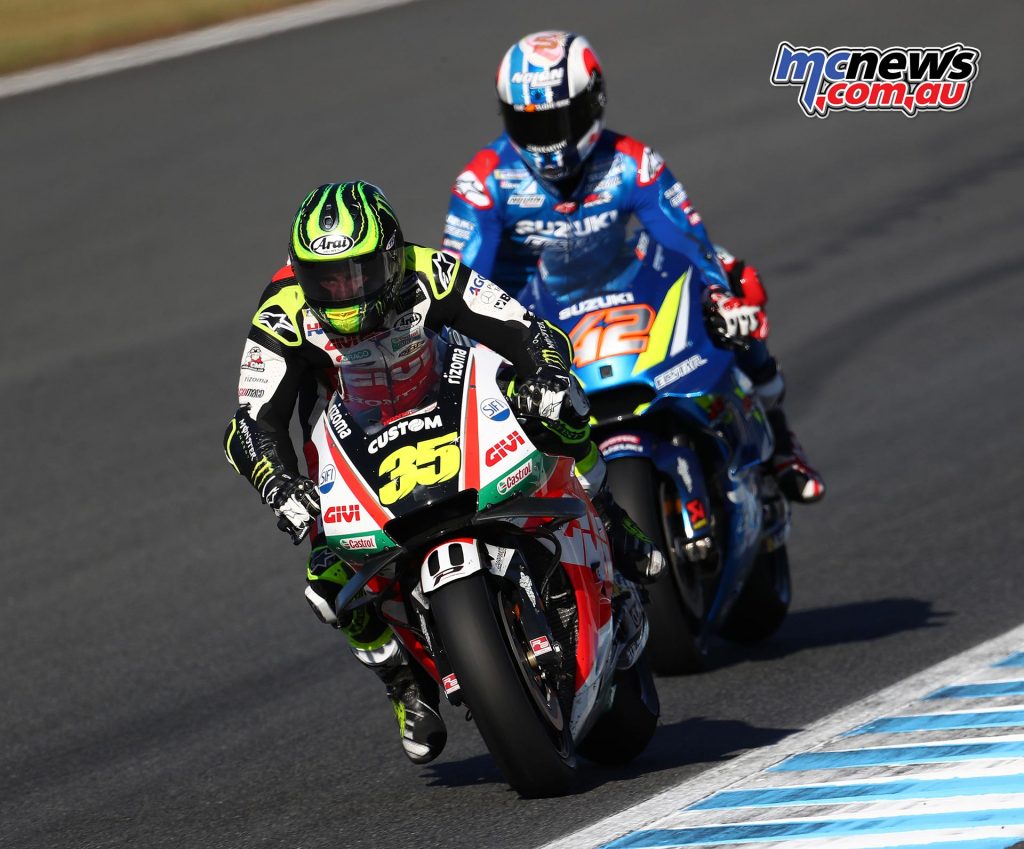
Valentino Rossi finished the race in fourth at the Japanese GP for the second successive time. Valentino Rossi has scored points in the last 13 successive races. The only time he failed to score points this season so far was in Argentina after the clash with Marc Márquez.
Yamaha riders have not won since Assen last season with Valentino Rossi (25 successive races), which is the longest winless streak for the Japanese manufacturer in the premier class of Grand Prix racing.
Honda head to Phillip Island with a 47-point lead over Ducati in the MotoGP Constructors World Championship and could clinch the title in Australia if the first Honda rider across the line doesn’t concede more than three more points to the first Ducati rider.
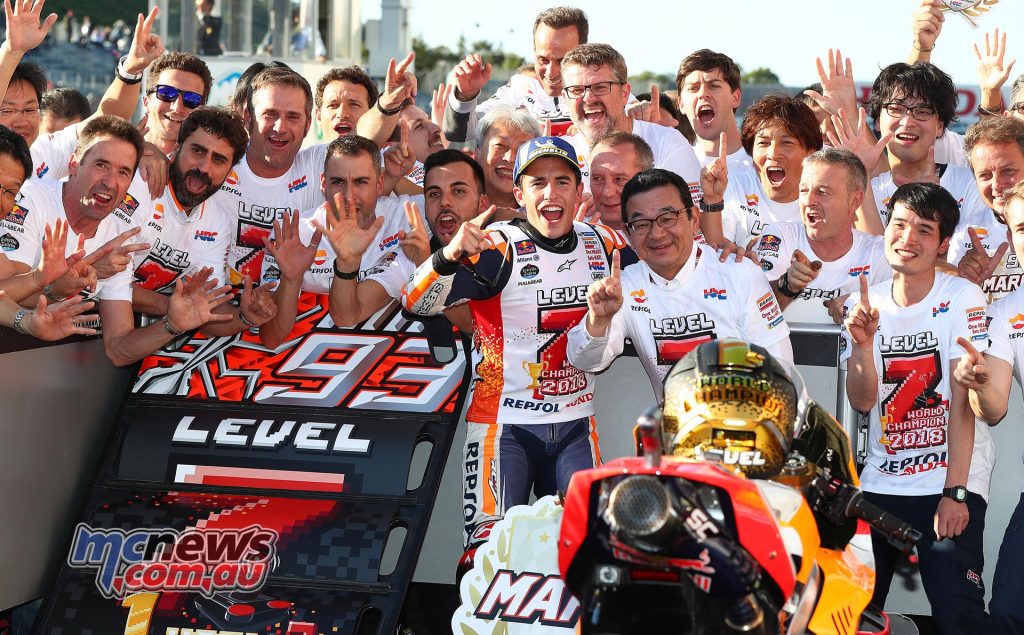
Following the Japanese GP, Yamaha have scored 231 points in the Constructor’s World Championship classification, which is the lowest points accumulated after the opening fifteen races by Yamaha since 2003 when the Japanese manufacturer had 164 points after the Malaysian GP.
At the Japanese GP, Hafizh Syahrin crossed the line in 10th, which is his best result since he was 9th in Argentina earlier this year. Franco Morbidelli, who was 11th in Japan, is still leading the Rookie of the Year classification with 38 points, followed by Hafizh Syahrin (34) and Takaaki Nakagami (19).
The only one of the five rookies in the MotoGP class this year to have previously won at Phillip Island in any of the smaller classes is Tom Lüthi in both 2005 in 125cc and in 2016 in the Moto2 class.
Along with Lüthi (2005, 2013, 2014 and 2016), Franco Morbidelli (2016 and 2017) is the only other of the five rookies who have stood on the podium at Phillip Island, all in Moto2. In addition, Lüthi is the only one of the five rookies to have previously qualified on pole position at Phillip Island, in 2005 in 125cc and in 2016 in Moto2.
Marc Márquez 2018 MotoGP World Champion
At the Japanese GP, Marc Márquez became the youngest-ever rider to win five premier class titles, at the age of 25 years and 246 days, taking the record from Valentino Rossi, who was 26 years and 221 days old when he won his fifth premier class title in 2005.
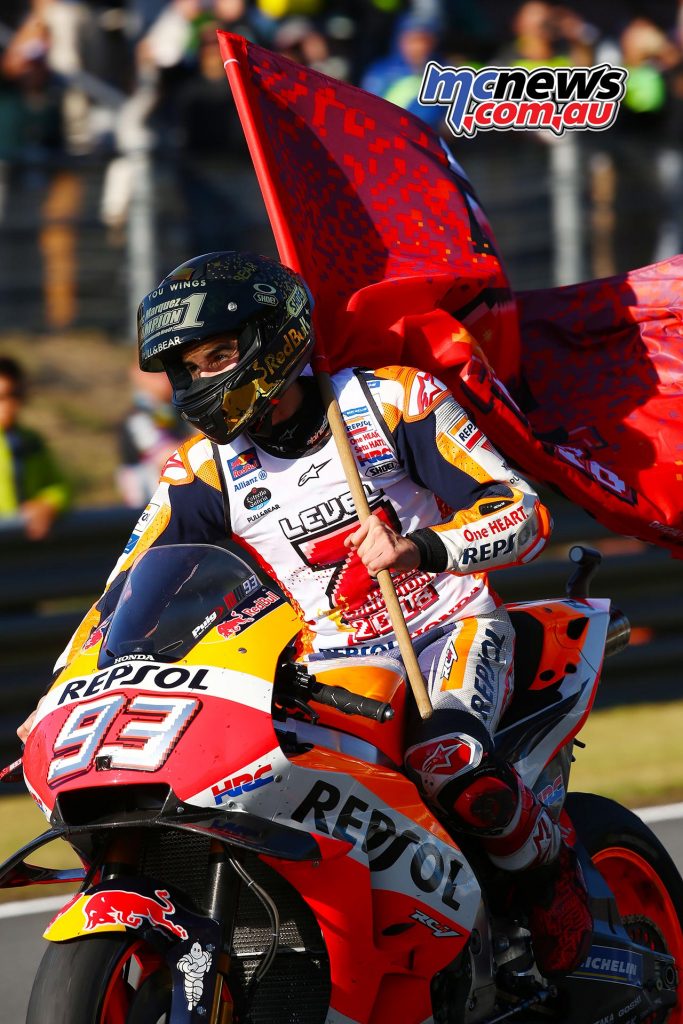
Márquez also became the youngest rider of all-time to reach the milestone of seven World Championships, taking the record from Mike Hailwood, who was 26 years and 140 days old when he won his seventh title, the 1966 350cc crown.
Márquez has joined Valentino Rossi, Mick Doohan and Giacomo Agostini as one of only four riders to have taken five or more premier-class World Championships.
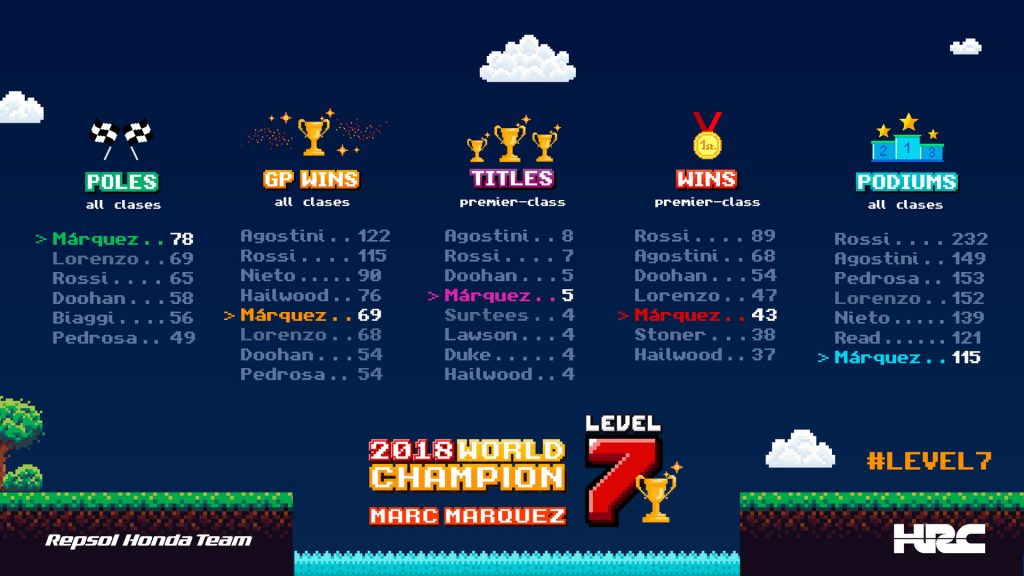
Márquez became one of only eight riders to have taken seven or more World Championships over all classes, the others being John Surtees (7), Phil Read (7), Carlo Ubbiali (9), Mike Hailwood (9), Valentino Rossi (9), Angel Nieto (13) and Giacomo Agostini (15).
Márquez has won all his MotoGP titles riding Honda motorcycles equalling Mick Doohan as the two riders with the most premier class titles with the Japanese manufacturer (5).
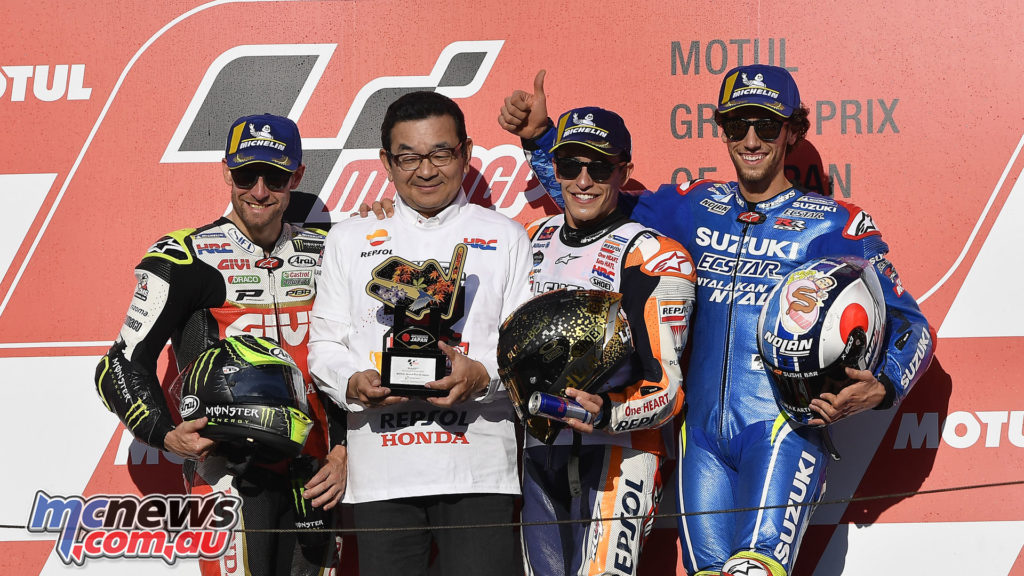
Only one Spanish rider has won more world titles than Márquez: Angel Nieto, who won 12+1 World Championships (seven in the 125cc class and six in the 50cc class) between 1969 and 1984.
Márquez has won at least five GPs per season over the past nine years, across three categories: 125cc, Moto2 and MotoGP. He is the first rider to achieve this distinction in the 70-year history of motorcycle Grand Prix racing, beating his own record from last year. Previously, Mike Hailwood was the only man to have achieved at least five victories per season over seven years, across at least three classes, between 1961 and 1967.
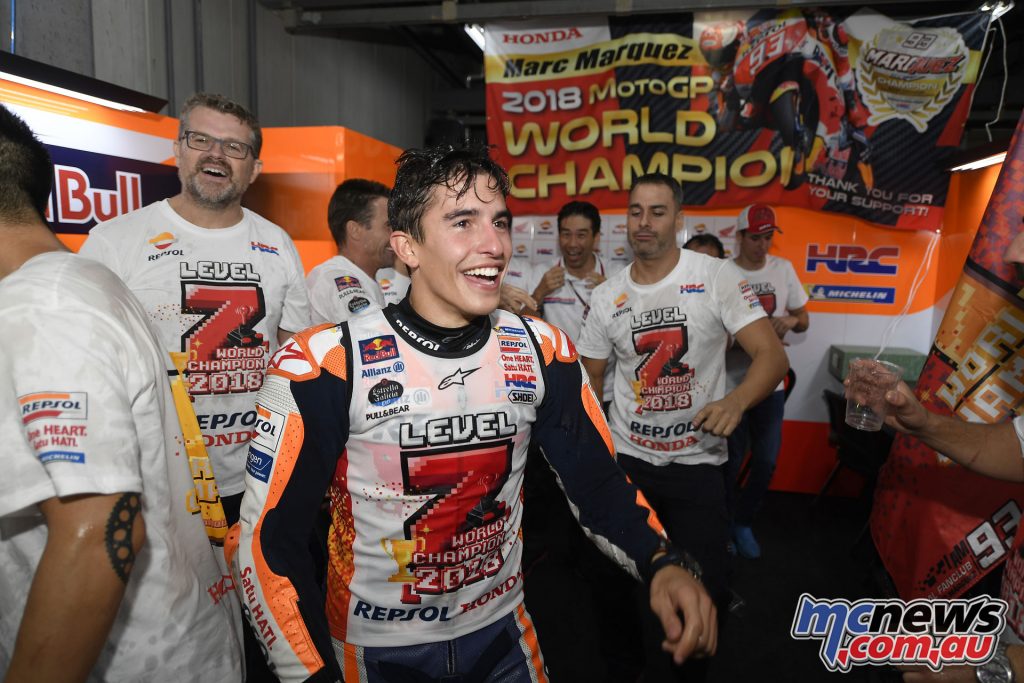
At Chang International Circuit, Márquez (25 years 231 days old) became the youngest rider to reach the milestone of 50 pole positions in the premier class of Grand Prix taking the record from Mick Doohan who was 32 years 122 days old when he set his 50th pole position in Australia.
Spain closes in on 600th Grand Prix win
The win by Marc Márquez at the Japanese GP was the 597th Grand Prix victory by a Spanish rider. By winning all three races at the Australian GP this weekend, Spain could become the second nation to reach the milestone of 600 Grand Prix wins across all solo classes as shown in the table below.